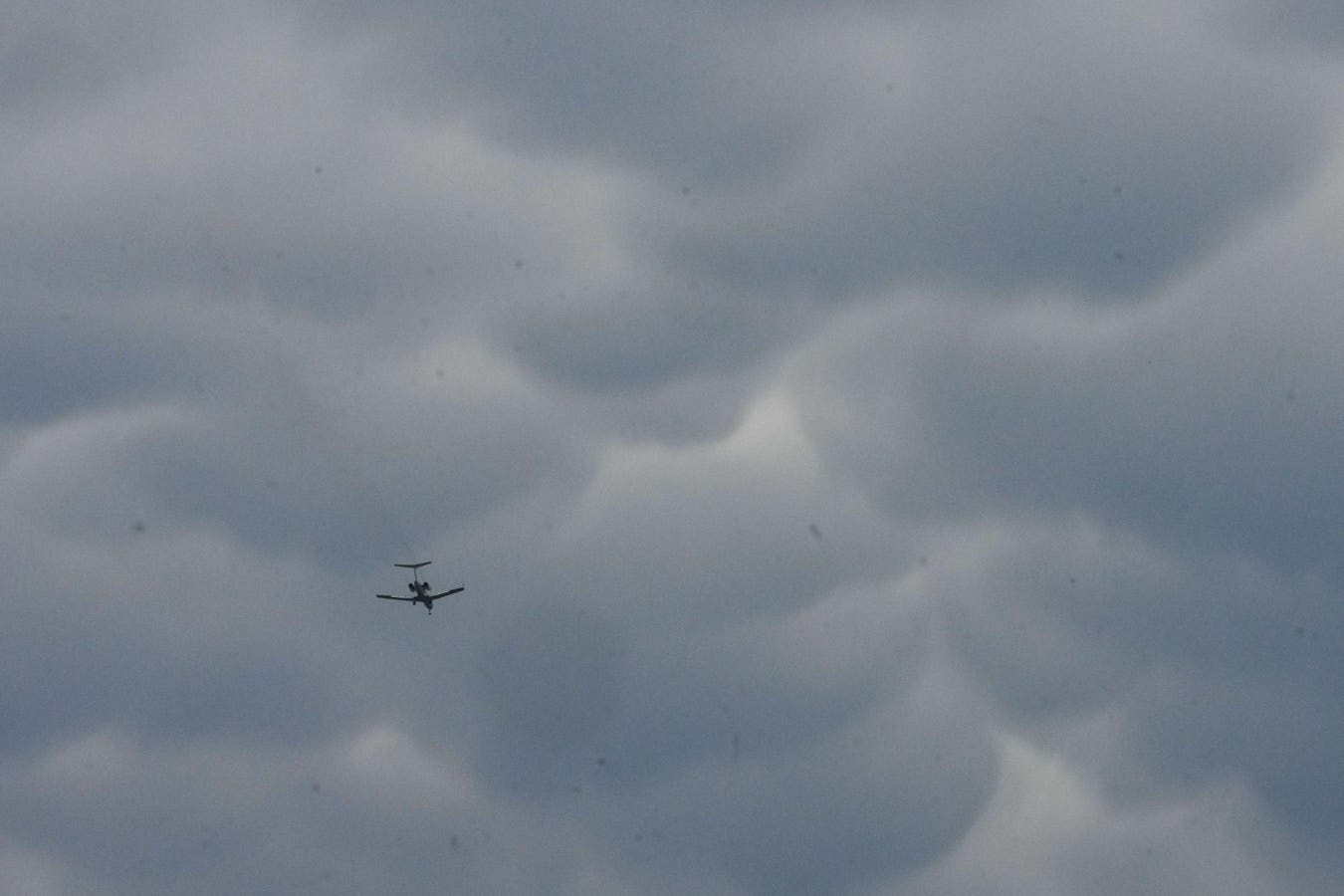Recently, there have been informal reports of a symptom described as “razor blade throat” associated … More
The idea of having this symptom may be a bit hard to swallow. But recently you may have heard mention of “razor blade throat” as a COVID-19 symptom. And chances are razor blades fall way down the list of things you’d like in your throat. But more and more informal reports of a severe, razor blade like soreness in the throat have corresponded with the emergence and rise of the NB.1.8.1 severe acute respiratory syndrome coronavirus 2 variant, the one that I described recently in Forbes. Does this mean that the NB.1.8.1 variant is leading to some different type of COVID-19? Not exactly. But it is a reminder that COVID-19 hasn’t simply become a non-issue. It is important to stay “sharp” about what COVID-19 can do and what precautions to take.
‘Nimbus’ Is An Informal Name For The NB.1.8.1 Variant
There’s also an informal new term being used on social media to describe this newish SARS-CoV-2 variant: “Nimbus.” That’s probably a bit easier to remember than NB.1.8.1, which looks more like some kind of password than a name. T. Ryan Gregory, PhD, a professor of integrative biology at the University of Guelph in Guelph, Ontario, Canada, appears to be the first to use the name “Nimbus” when he did so on a tweet or perhaps you’d call it an X in late May to describe the NB.1.8.1 variant.
Now, nimbus may sound like a combination of “nimble” and “incubus.” But it is often used meteorologically to refer to a jagged type of storm cloud. It also mythologically refers to the shining cloud that surrounds a deity like Zeus, Athena or Taylor Swift when he or she appears on earth.
The naming of variants and subvariants has been quite an odyssey. It started off as a Greek odyssey of sorts with a formal variant naming convention using prorgessively different Greek letters like alpha, beta and delta. But not too long after the Omicron variants became dominant, it was no longer all Greek to everyone as that naming schema did not continue. The default became just these alphanumeric sequences devised by scientists following the genetics of the variants that looked more like the names of Star Wars droids. That motivated some like Gregory on social media to give some new emerging variants more memorable names like Arcturus, Kraken, Eris and Pirola.
The NB.1.8.1 has already caught the attention of who else besides the World Health Organization. The WHO on May 23 declared this variant as “a variant under monitoring,” based on the mutations in its spike proteins and its fairly rapid spread in different parts of the world. It’s already become the second most common SARS-CoV-2 variant in the U.S., detected in around 37% the reported and tested COVID-19 cases, only a percentage point behind the leader of the pack LP.8.1, according to the CDC. Take these numbers with a gigantic fanny pack of salt, though, since a large percentage of COVID-19 the U.S. are going untested and unreported these days.
‘Razor Blade Throat’ Is An Informal Term For A Very Sore Throat
Of course, informal reports aren’t the same as peer-reviewed scientific studies or data from established clinical surveillance systems. It’s also difficult to tell how common this so-called “razor blade throat” may be. After all, social media and the Internet can make something seem more common or popular than it really is. For example, it’s not as if everyone was putting Tide Pods in their mouths several years ago.
Moreover, it’s not clear what percentage of these “razor blade throats” are actually cases of COVID-19. A number of different things can cause “pharyngitis,” which is inflammation of your pharynx. Your pharynx sits behind your nasal cavity and mouth and connects them to your esophagus. Basically anything that goes down your pie hole will travel through this muscular tube.
Lots of different viruses and bacteria can cause pharyngitis. Allergies can give you pharyngitis as well. So can acid reflux or eating things that are particularly hot or spicy. Pharyngitis can be a sign of a growth or tumor too. Heck, even sleeping with your mouth open can dry the mucus membranes out and give you a very sore throat. The degree of soreness is not a reliable indicator of what may be causing the pharyngitis.
Since your typical viral infection should clear up well within a week, contact your doctor if your sore throat lasts longer than a week. it will be important to rule out any of the uh-oh stuff and treat stuff that needs treatment like a bacteria infection.
A ‘Razor Blade Throat’ Could Be A Sign Of COVID-19 But Not Necessarily
Ultimately, you can’t tell what’s causing a very sore throat without a real medical exam and further testing. Therefore, you should never begin a sentence with, “I have a severe sore throat, therefore I must have [such and such].” The next step in a medical evaluation a very sore throat is checking for other symptoms and a true health professional performing a physical exam, which should include looking at your throat, tongue and other things connected to your throat like you ears. Such an evaluation could entail swabbing the back of your throat and sending the sample to be checked for things like strep and SARS-CoV-2.
These days you may hear the words, “I’m pretty sure I don’t have COVID” without the words that need to follow, namely “because I tested negative.” Again the only way to tell whether or not you actually have an infection like COVID-19 is through such testing. And that back-of-the-throat-feel-like-my-brain-is-being-tickled test that you get at a health clinic is a lot more accurate than those home tests. Home tests have a very high false negative rates, meaning that just because the test is negative doesn’t mean you can really rule out COVID-19.
Nonetheless, a sore throat has long been one possible symptom of COVID-19. It become even more common with all the Omicron variant. So a sore throat that feels like razor blades wouldn’t be a new symptoms or nay indication that the NB.1.8.1 or nimbus variant should cause on average worse, more severe outcomes than previous variants.
That doesn’t mean, though, that the NB.1.8.1 is no big deal. COVID-19 has still been landing people in the hospital, killing a number of them and saddling many more with the awful consequences of long COVID. Just because many politicians aren’t talking about COVID-19 doesn’t mean that it’s ceased being a threat. As I’ve written previously, there is evidence that the NB.1.8.1 is better able to bind to human cells, making it potentially more transmissible. The rapid spread of the NB.1.8.1 seems to support this possibility.
Again, it’s not clear how many of these “razor blade throat” cases have occurred to date and how many are due to the new SARS-CoV-2 variant. But chances are you are not hearing this symptom and thinking, “I want some of that.” Therefore, it’s better to be prepared for this possibility and another possible Summer COVID-19 surge. The same evidence-based precautions are available including good quality face masks when in more crowded areas, good ventilation and air purification and frequent and thorough hand washing. There’s also staying up to date on the COVID-19 vaccine and keeping in mind that the immune protection offered by the vaccine usually starts to wane at the four-to-six-month mark. On top of all this, stay sharp on any new COVID-19 developments, meaning in a keeping up to date way and not a razor blades to the throat way.









